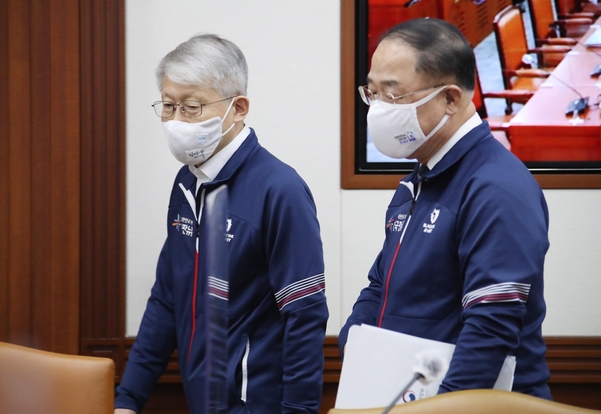Input 2021.01.31 08:00
Crushed 32 500ml waste PET bottles for recycling…making jackets, shoes, and bags

Recently, in the fashion world, recycling waste PET bottles to make clothes is spreading like a fashion. As interest in the environment increases, especially among young people, more and more consumers are looking for eco-friendly fashion. In the past, raw materials for waste PET bottles were imported from Japan or Taiwan to make clothes, but recently, in cooperation with local governments, they directly collect plastic bottles to make recycled clothing.
Black Yak signed a business contract with TK Chemical, a chemical fiber manufacturer of SM Group last year, and introduced K-rPET (K-RPT) recycled clothing for the first time in Korea. The company recently organized the New Lifetex Task Force (TF) team and built a resource circulation model from PET bottle collection to recycled fiber extraction, product production, and sales. PET bottles are also collected directly in cooperation with the Ministry of Environment, Gangwon-do, Gangneung-si, Samcheok-si, and Gangbuk-gu, Seoul.
This is the process of making clothes from plastic bottles. Collect clean transparent PET bottles and crush them to separate recyclable PET. It is processed at a high temperature of 260℃ to make rice grain-shaped chips, and the chips are melted and polyester threads are drawn.

An official of the company said, “The ratio of domestic PET bottles separated and discharged is high at 80%, but the proportion of recycled plastics for clothing is very low,” said a company official. “We decided that importing plastic bottle raw materials from overseas to make clothes is meaningless. “We have built a circulation system to make the products. We plan to increase related products by collecting more PET bottles in the future.”

There are also companies that make a big hit by making shoes out of plastic bottles. Founded in the U.S. in 2016, Rotis made shoes out of discarded plastic bottles, and made sales of $140 million (about 1565 billion won) after two years of establishment. The current enterprise value is 700 million dollars (about 780 billion won). Three 500 mL plastic bottles are used per pair of shoes, and more than 75 million plastic bottles have been recycled so far.
Consumers’ interest in eco-friendly fashion is expected to increase. According to a survey conducted by global consulting firm McKenzie of 16,000 people in six Asian countries, Korean Gen Z (born after 1995) had the highest rate of “consuming ethical value” among the six countries with 26%. It is an analysis that corporate social responsibility is becoming an essential factor for long-term growth.
